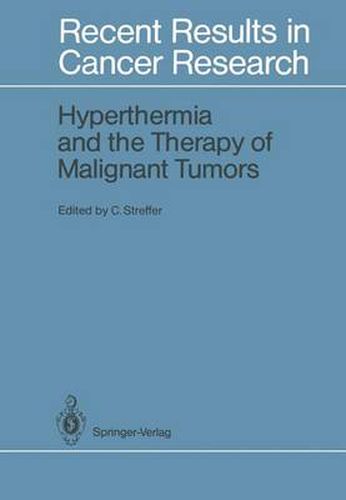Readings Newsletter
Become a Readings Member to make your shopping experience even easier.
Sign in or sign up for free!
You’re not far away from qualifying for FREE standard shipping within Australia
You’ve qualified for FREE standard shipping within Australia
The cart is loading…






This title is printed to order. This book may have been self-published. If so, we cannot guarantee the quality of the content. In the main most books will have gone through the editing process however some may not. We therefore suggest that you be aware of this before ordering this book. If in doubt check either the author or publisher’s details as we are unable to accept any returns unless they are faulty. Please contact us if you have any questions.
Tumour therapy depends essentially on being able to destroy the clonogenic activity of tumour cells while keeping the damage to the normal tissue low. Clinical experience shows that tumour response varies greatly even if tumours with the same localisation, clinical, and histopathological staging are compared. Some tumours appear to be resistant to conventional radiotherapy (X-rays, y-rays or fast electrons) or chemotherapy. In these cases new therapy modalities are necessary. Combined therapy modalities seem to have advan- tages for some resistant tumours; one possibility of such a treatment is to combine radiotherapy or chemotherapy with hyperthermia. This means that the local tumour, the tumour region or even the whole body of the patient has to be heated to temperatures between 40 to 45 C (in case of whole body hyperthermia to 42 C maximal) for a certain time (usually 30-60 min are adequate). Hyperthermia has a long tradition in medicine as a treatment modality for various diseases. Inscriptions of the old Egyptians and texts of the Greeks have pointed out its importance. Usually whole body hyperthermia has been used by the induction of fever. Local hyperthermia began around 1900 when Westermark treated unre- sectable cervix carcinomas with hot water in a metallic coil. By the beginning of this century an increase of radiation effects was hy- pothesised with hypothermia and later observed. However, only in the 1960s and 1970s were systematic investigations started which showed radiosensitisation and chemosensitisation by hyperthermia in cells and tissues including tumours.
$9.00 standard shipping within Australia
FREE standard shipping within Australia for orders over $100.00
Express & International shipping calculated at checkout
This title is printed to order. This book may have been self-published. If so, we cannot guarantee the quality of the content. In the main most books will have gone through the editing process however some may not. We therefore suggest that you be aware of this before ordering this book. If in doubt check either the author or publisher’s details as we are unable to accept any returns unless they are faulty. Please contact us if you have any questions.
Tumour therapy depends essentially on being able to destroy the clonogenic activity of tumour cells while keeping the damage to the normal tissue low. Clinical experience shows that tumour response varies greatly even if tumours with the same localisation, clinical, and histopathological staging are compared. Some tumours appear to be resistant to conventional radiotherapy (X-rays, y-rays or fast electrons) or chemotherapy. In these cases new therapy modalities are necessary. Combined therapy modalities seem to have advan- tages for some resistant tumours; one possibility of such a treatment is to combine radiotherapy or chemotherapy with hyperthermia. This means that the local tumour, the tumour region or even the whole body of the patient has to be heated to temperatures between 40 to 45 C (in case of whole body hyperthermia to 42 C maximal) for a certain time (usually 30-60 min are adequate). Hyperthermia has a long tradition in medicine as a treatment modality for various diseases. Inscriptions of the old Egyptians and texts of the Greeks have pointed out its importance. Usually whole body hyperthermia has been used by the induction of fever. Local hyperthermia began around 1900 when Westermark treated unre- sectable cervix carcinomas with hot water in a metallic coil. By the beginning of this century an increase of radiation effects was hy- pothesised with hypothermia and later observed. However, only in the 1960s and 1970s were systematic investigations started which showed radiosensitisation and chemosensitisation by hyperthermia in cells and tissues including tumours.